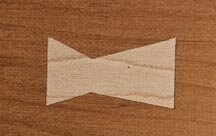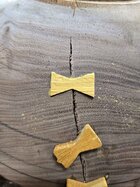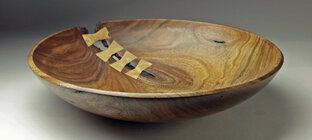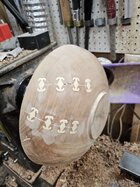From what I see, pewa, or bowties, are usually placed perpendicular to the crack with the narrow waist over the crack. I placed a couple parallel to the crack and I think it looks pretty good also. I was just experimenting. What are your thoughts on pewa placement? Is it artist choice?
Traditionally, corners are sharp but I also like the softness of the rounded corners.
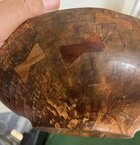
Traditionally, corners are sharp but I also like the softness of the rounded corners.


